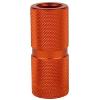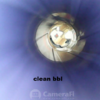Hi all,
Long time reloader for AR15s in .223 Rem and 300 BLK, but recently bought a T/C Compass in .308 Win over the holiday season because the price was just so low I couldn't help myself. I bough a new set of Lee Ultimate 4pc dies for .308. This set came with a full length die and a neck sizing die along with seating and crimping dies (plus the shell holder and powder scooper.) Add 200 once-fired 7.62 NATO cases and an 8lb keg of CFE223 powder and I'm ready to start reloading for my new rifle.
To prep the cases I de-primed and ran them thru a wet tumbler with stainless steel pins to clean the cases. Next I resized with Imperial Sizing Die Wax. Installed Winchester Large Rifle primers. Loaded/weighed the charges by hand with a trickle charger. Seated the bullets to 2.700", in the cannular, and lightly crimped them in place.
I started my first load ladder using 48.0gr ~ 49.5gr of CFE223 powder behind a Hornady 150gr FMJ bullet set at 2.700" COAL and have run into a problem closing the bolt on some of my reloaded cartridges. So I bought a Lymann aluminum .308 cartridge gauge and found some of the cases would not fully seat into the gauge. I shaved 0.002" off the top of the shell holder to push the shoulder back "a couple thou". After pulling the bullets and running ALL the case through the FL resizer once again they now either drop completely into the cartridge gauge or seats fully with slight pressure.
So I took the rounds to the range. I can now close the bolt on all rounds and none have failed to fire. But I ran into a problem with failure to extract. At first I could unlock the bolt but not pull it rearward. I had to use a plastic faced mallet to open the bolt. On my last round fired the extractor jumped off the case rim and left the case stuck in the chamber (that's why it was my last round -- rifle was now dead for that shooting session).
This problem only happens with my reloads, not with new cartridges. I had with me two boxes of off the shelf ammo (Federal white box XM80C and Monarch steel cased) and had no problems with any getting stuck in the chamber.
Today I took a micrometer to the remaining completed handloads that I have left. All the case dimensions are the same or slightly smaller than the .308 Win dimensions shown in my Hornady manual. My resized cases are apparently slightly undersized. The completed cartridges drop into the cartridge gauge and the base sits flush with the end of the gauge. So as far as I can tell my reloads are the proper dimensions and should not cause any issues.
Any ideas what may be causing the fired cases to get stuck in the chamber and not extract? When I pull the cases free the only sign of over pressure is a light ejector swipe on the base of the case. On the last step of the ladder (49.0gr) (just before the case got stuck in the chamber) I had just began to see the Winchester Large Rifle primers start to appear flat. But I have seen worse so I don't think we had exceeded max pressure.
I'd imagine that if there was a problem with the chamber it would impact the boxed rounds the same as my reloads? There was zero issue with boxed rounds.
I'd imagine if there was a problem with my handloads it would not fit completely into the cartridge gauge. And if there was a problem with the size of the case I'd expect that once I fire the round it would now be perfectly sized to my rifle's chamber so extraction should be no problem. What causes a reloaded case to get stuck while allowing a boxed round to come free normally?
There was only one bit of data that I collected that might indicate a problem... I was able to capture bullet speed 10ft off the end of the 22" barrel for JUST ONE ROUND of the 48.5gr load. My chrono died for all the rest of the testing. With 48.5gr of CFE223 I got one reading of 2900fps. 2900fps is near the upper end of my load data (2974fps is at the max charge of 49.5). Maybe my batch of CFE223 is hotter than normal?
But I'm not certain I can trust this reading because it was a single reading and the chrono started to throw errors soon after.
Long time reloader for AR15s in .223 Rem and 300 BLK, but recently bought a T/C Compass in .308 Win over the holiday season because the price was just so low I couldn't help myself. I bough a new set of Lee Ultimate 4pc dies for .308. This set came with a full length die and a neck sizing die along with seating and crimping dies (plus the shell holder and powder scooper.) Add 200 once-fired 7.62 NATO cases and an 8lb keg of CFE223 powder and I'm ready to start reloading for my new rifle.
To prep the cases I de-primed and ran them thru a wet tumbler with stainless steel pins to clean the cases. Next I resized with Imperial Sizing Die Wax. Installed Winchester Large Rifle primers. Loaded/weighed the charges by hand with a trickle charger. Seated the bullets to 2.700", in the cannular, and lightly crimped them in place.
I started my first load ladder using 48.0gr ~ 49.5gr of CFE223 powder behind a Hornady 150gr FMJ bullet set at 2.700" COAL and have run into a problem closing the bolt on some of my reloaded cartridges. So I bought a Lymann aluminum .308 cartridge gauge and found some of the cases would not fully seat into the gauge. I shaved 0.002" off the top of the shell holder to push the shoulder back "a couple thou". After pulling the bullets and running ALL the case through the FL resizer once again they now either drop completely into the cartridge gauge or seats fully with slight pressure.
So I took the rounds to the range. I can now close the bolt on all rounds and none have failed to fire. But I ran into a problem with failure to extract. At first I could unlock the bolt but not pull it rearward. I had to use a plastic faced mallet to open the bolt. On my last round fired the extractor jumped off the case rim and left the case stuck in the chamber (that's why it was my last round -- rifle was now dead for that shooting session).
This problem only happens with my reloads, not with new cartridges. I had with me two boxes of off the shelf ammo (Federal white box XM80C and Monarch steel cased) and had no problems with any getting stuck in the chamber.
Today I took a micrometer to the remaining completed handloads that I have left. All the case dimensions are the same or slightly smaller than the .308 Win dimensions shown in my Hornady manual. My resized cases are apparently slightly undersized. The completed cartridges drop into the cartridge gauge and the base sits flush with the end of the gauge. So as far as I can tell my reloads are the proper dimensions and should not cause any issues.
Any ideas what may be causing the fired cases to get stuck in the chamber and not extract? When I pull the cases free the only sign of over pressure is a light ejector swipe on the base of the case. On the last step of the ladder (49.0gr) (just before the case got stuck in the chamber) I had just began to see the Winchester Large Rifle primers start to appear flat. But I have seen worse so I don't think we had exceeded max pressure.
I'd imagine that if there was a problem with the chamber it would impact the boxed rounds the same as my reloads? There was zero issue with boxed rounds.
I'd imagine if there was a problem with my handloads it would not fit completely into the cartridge gauge. And if there was a problem with the size of the case I'd expect that once I fire the round it would now be perfectly sized to my rifle's chamber so extraction should be no problem. What causes a reloaded case to get stuck while allowing a boxed round to come free normally?
There was only one bit of data that I collected that might indicate a problem... I was able to capture bullet speed 10ft off the end of the 22" barrel for JUST ONE ROUND of the 48.5gr load. My chrono died for all the rest of the testing. With 48.5gr of CFE223 I got one reading of 2900fps. 2900fps is near the upper end of my load data (2974fps is at the max charge of 49.5). Maybe my batch of CFE223 is hotter than normal?
But I'm not certain I can trust this reading because it was a single reading and the chrono started to throw errors soon after.















